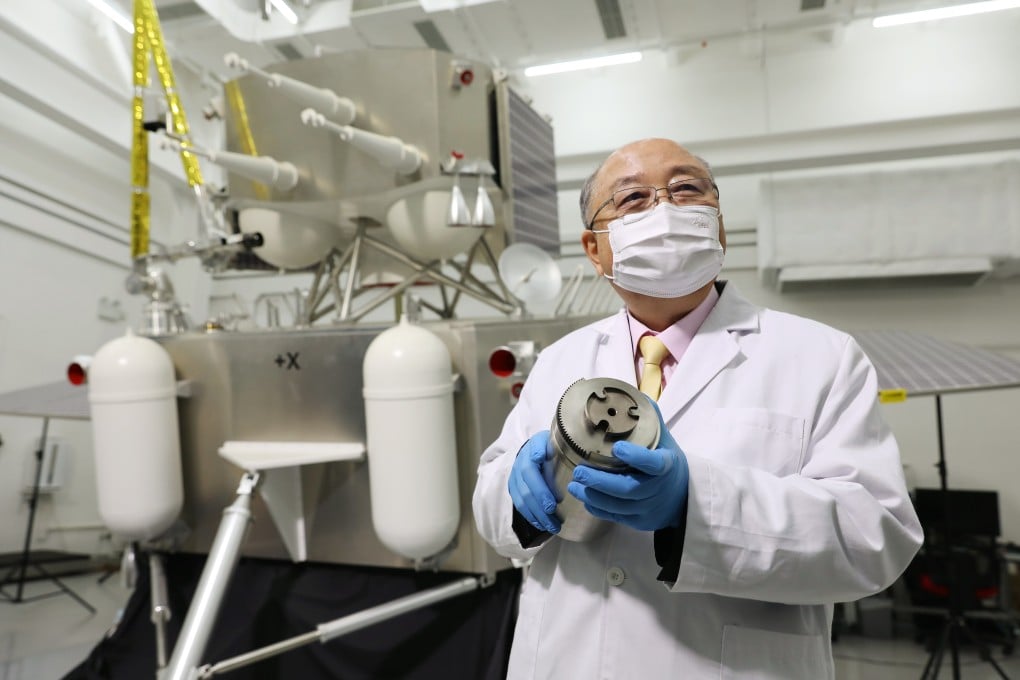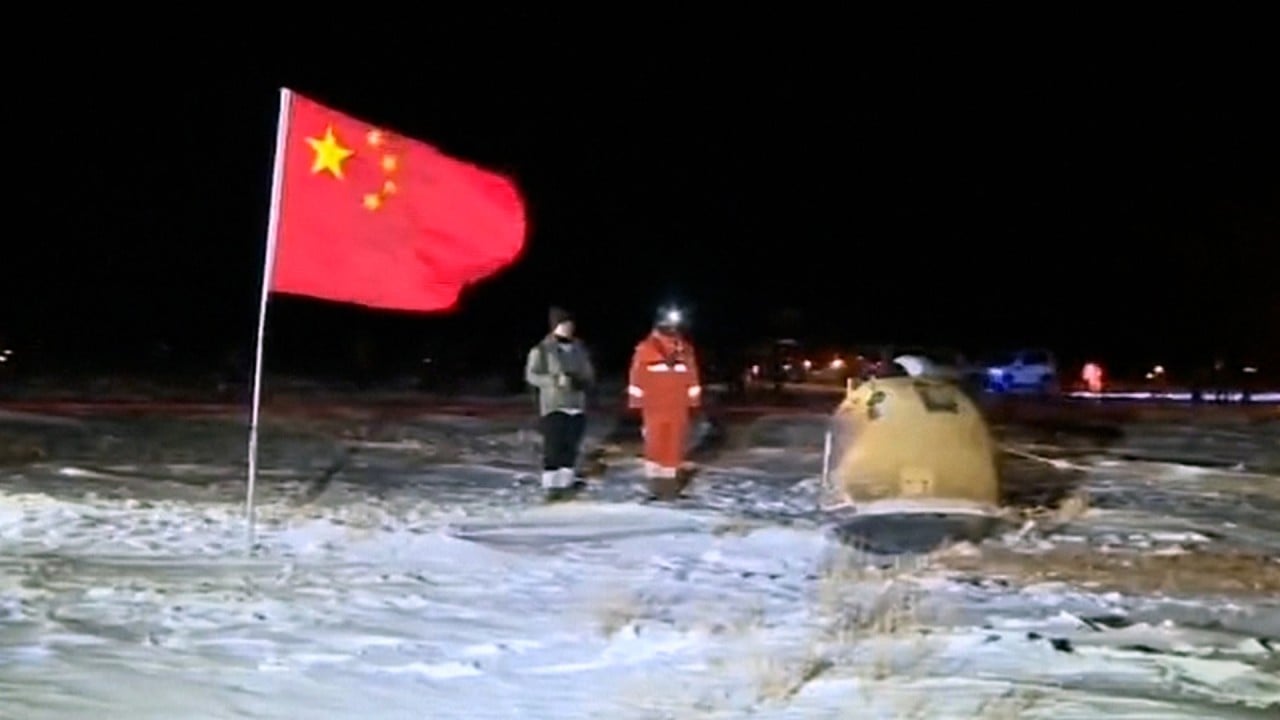Hong Kong team behind Chang’e 5 moon rock sampling set sights on Chang’e 6
- PolyU researchers who developed the scoops and container for China’s lunar mission are relieved after surface and soil samples are returned to Earth
- They will assess whether any improvements are needed for the next mission, and hope to be given a quantity of Chang’e 5’s samples for research

“The [Chang’e 5] mission has ended, but not our project … We will compare the data collected on the moon with our design parameters and evaluate any improvements that may be needed to our design for the Chang’e 6 mission,” Yung said in a press conference on Thursday at the university campus.
Chang’e 6, China’s next lunar mission, is expected to launch in 2023 or 2024, and will again feature the Hong Kong-developed sampling system.

01:28
China’s Chang’e 5 lunar mission returns to Earth with moon samples
The 2kg of surface samples and a further 500 grams of underground samples brought back by the return capsule, which landed in the northern Chinese region of Inner Mongolia, were due to be unpackaged in a special facility in Beijing to prevent contamination.